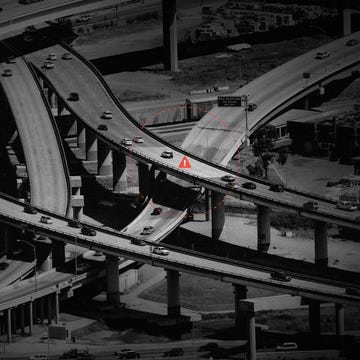Recently, I saw a post on social media about using a tool battery to jumpstart a car. The comments (tip: never read the comments) were amusing, with the self-identified experts claiming there was no way it would work. I know it works—because I’ve actually done it, in a pinch.
Coincidentally, when I turned the key in the ignition of my car this week, I heard the staccato clickety-click of relays trying to connect various circuits rather than the business-like sound of the starter turning the engine over. The battery wasn’t strong enough to start the car. I hadn’t left anything on, so there were three possibilities. The 4-year old battery could be failing, the alternator might not be charging the battery enough, or I could have a short somewhere draining the battery.
I hadn’t noticed any warning lights indicating a charging issue, and my car hasn’t been in any floods or accidents that could have compromised the wiring or electronics. So, the battery seemed like the most likely cause. It wasn’t completely dead, it just didn't have quite enough juice to turn the engine over. Often, as batteries age, they fail slowly. Either they can no longer be fully charged or they can’t store a full charge for long—the voltage gradually dips down below 12 volts as it sits unused. Your car’s charging system typically generates between 14 and 15 volts to charge the battery. And, although commonly referred to as a 12-volt battery, the actual voltage if you measure it is usually around 12.5 volts.
There are two common options, jump the battery from another vehicle, or pull out my battery charger—either of which takes about 20 minutes. Getting keys, cables, moving my truck—or getting the charger and extension cord out—starting the car, then putting everything away, eats up more time than you think.
With the prospect of getting to work late, I opted for a third option—using a cordless tool battery to start my car. I’ve done this a few times in the past, and it’s a hack that can get you going quickly. In fact, the last time I did it, I made up a couple jumper leads that easily plug into the battery, and clip to the car, to make it even easier and quicker.
The disclaimer: I don’t recommend you do this regularly, as it is possible to damage your tool battery or electronics in your car. Don’t leave the tool battery connected to your car for any longer than absolutely necessary.
How to Jump Start the Battery
I have Milwaukee cordless tools which use 18-volt batteries—that’s about 3 volts more than your car’s alternator generates to charge the battery. In my experience, your car can handle that extra voltage for a short period—but keep it as short a period as possible. Most of the time, your battery just needs a little more juice to get the starter to turn over, so you don’t really need a huge battery—5 amp-hours is often sufficient.
For the jumper leads, I used materials I had on hand. The wire is 12 gauge, used to power an electric motor on an old project—10 gauge would be a better option. I connected alligator clips to one end of each wire. You could also use larger battery charger clamps. And I crimped spade connectors on the other end of each wire.
Press the spade connectors into the appropriate battery contacts—I used red and black wires to make it easier to identify positive and negative. On tool batteries, the positive and negative contacts are labeled, so be sure to match them up with your car. Use the alligator clips to connect to the accessory lug on the positive battery terminal, and the negative can clip onto a stud or bolt on the engine.
Once connected, get in your car and start it. Then quickly disconnect the tool battery. Once the leads are pulled from the battery, take it with you in case you need to jump start it again. Also, be sure to figure out why your battery was low as soon as possible and get it fixed properly.
It’s worth noting that you can buy battery jump packs specifically for this type of situation. Good ones cost more than $100 and, if I needed one often, I would buy one. But I already have several tool batteries charged up at any time and I have only used this method three times in the last few years, so I’ll hold off on the investment.
Brad Ford has spent most of his life using tools to fix, build, or make things. Growing up he worked on a farm, where he learned to weld, repair, and paint equipment. From the farm he went to work at a classic car dealer, repairing and servicing Rolls Royces, Bentleys, and Jaguars. Today, when he's not testing tools or writing for Popular Mechanics, he's busy keeping up with the projects at his old farmhouse in eastern Pennsylvania.


















